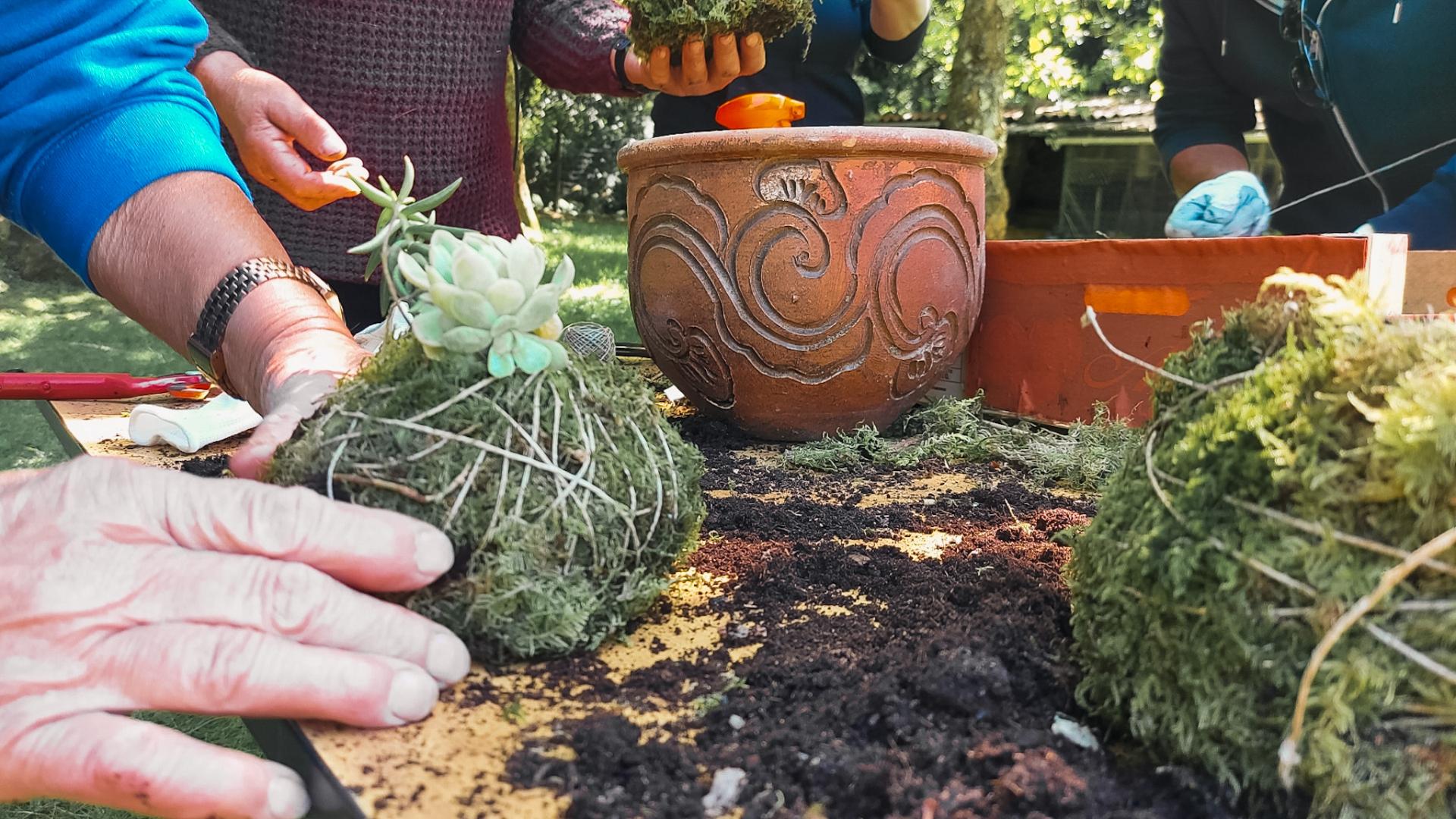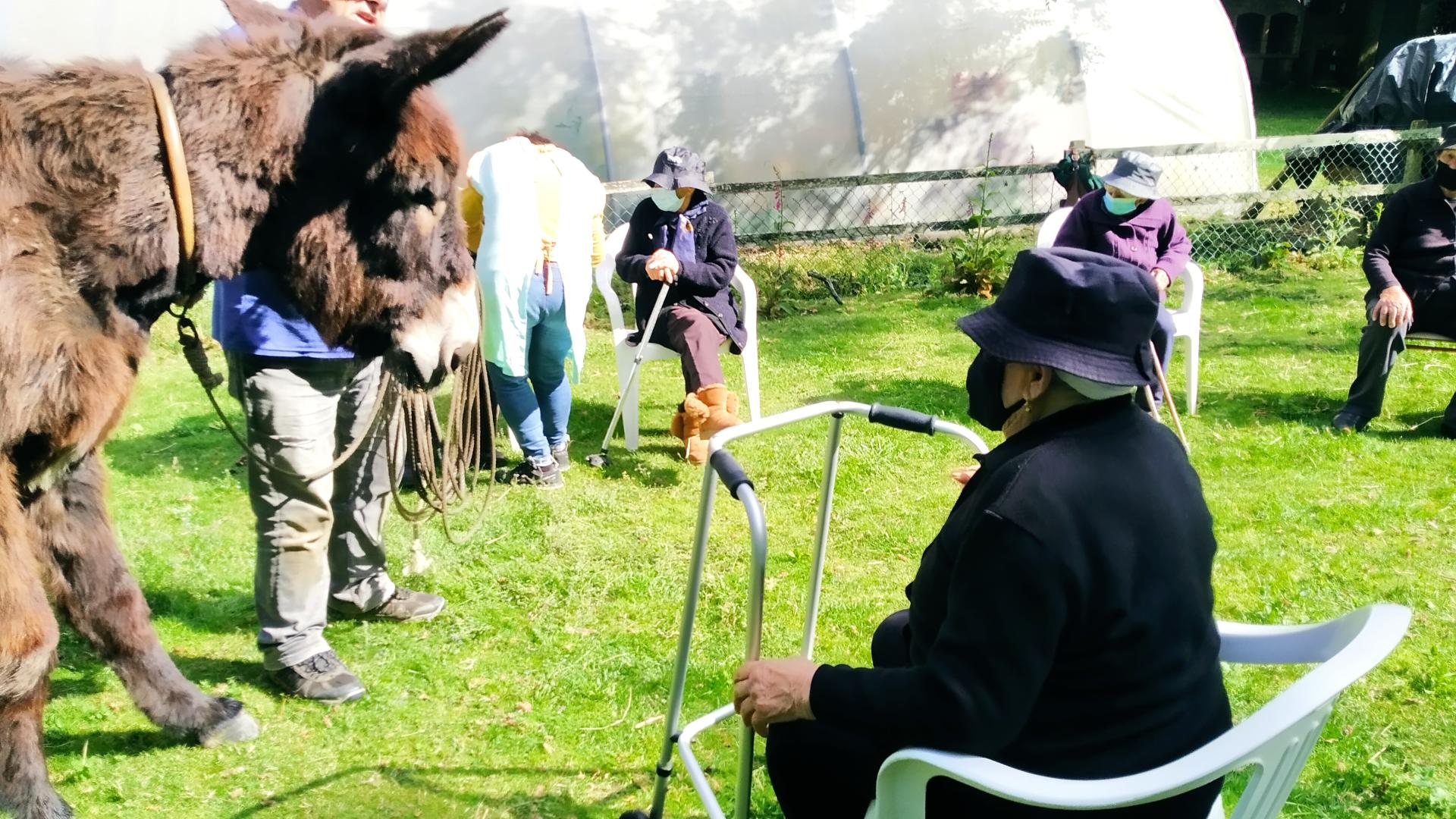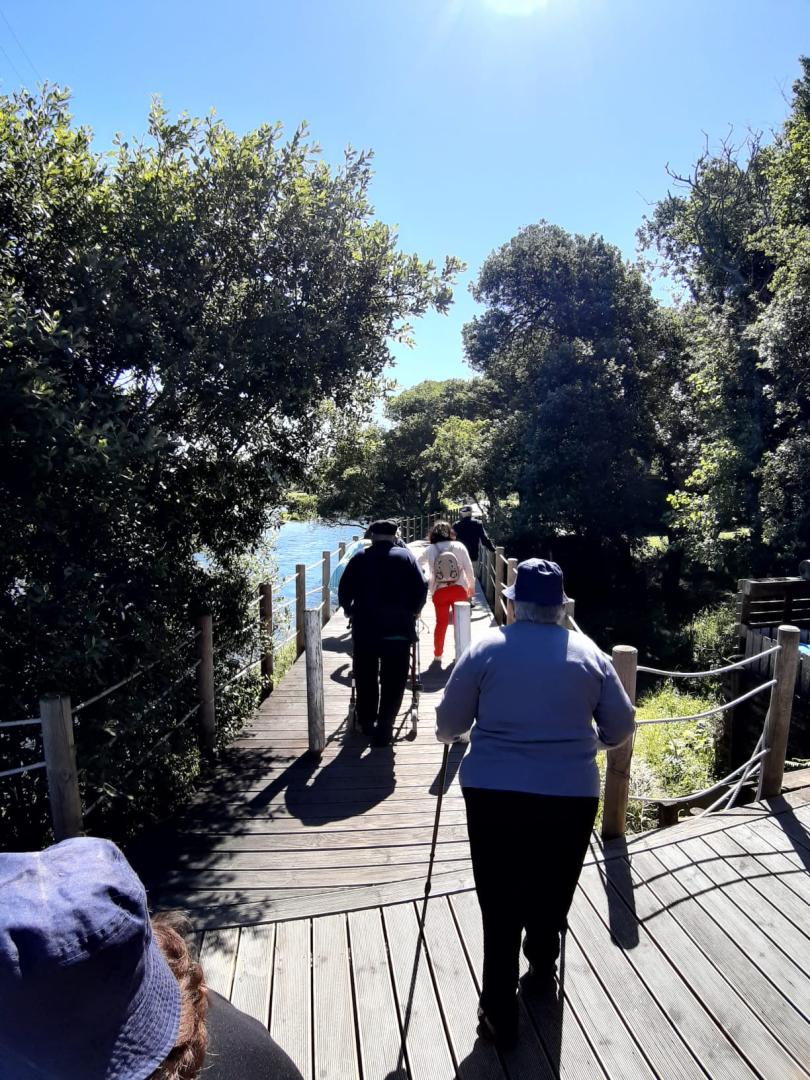Green Hour
Basic information
Project Title
Full project title
Category
Project Description
‘Green Hour’ aimed to promote an active ageing, by implementing regular nature-based activities, targeting the local community seniors, including vulnerable groups (> 65 years old and also those with reduced mobility, dementia, Alzheimer, impaired vision etc.). ‘Green Hour’ designed and developed tailor made activities, according to the specific needs of each sub-group and delineated according to the natural surrounding Natura 2000 context.
Geographical Scope
Project Region
Urban or rural issues
Physical or other transformations
EU Programme or fund
Which funds
Description of the project
Summary
The ‘Green Hour’ project conceived, developed and deployed a diversity of nature-based activities aiming to stimulate mental dexterity, memory, creativity, fine motor skills, and social interaction. The ultimate goal was to promote well-being and alleviate feelings of isolation.
This was achieved by directly engaging:
- seniors living on their own and more active, but still in need of a support local network;
- vulnerable seniors under the care of local social charities (i.e. day care centres).
A set of activities were designed according to the specific needs of the target-group, focusing on outdoors nature activities, and one-on-one home activities for specific needs when required.
These activities were divided according to 5 complementary strands:
- Sensorial experiences (sensorial garden co-creation, workshops, …);
- Nature sports (adapted river kayak, walking trails…);
- Biodiversity experiences (fauna and flora observation, …);
- Community environment (seed planting, arboretum co-creation, …);
- Biodiversity toolkit boxes (learning and sharing, observation, problem-solving, …).
The project achieved considerable success, based on its positive impact and continued high demand, well beyond what was initially expected. Indeed, the initial plan was to work in partnership with one social charity, but at the end we regularly worked with 12. A total of 282 seniors participated in the activities, with an average of 120 weekly participations.
The project was implemented by Rio Neiva - Environmental NGO, in Esposende and Viana do Castelo municipalities, in northern Portugal. The project team included 1 biologist, 1 biologist and illustrator, and 1 project manager, which worked together with social charities staff.
Key objectives for sustainability
The sustainability principle is grounded in:
- focus on the existing Natura 2000 local biodiversity by raising awareness and knowledge;
- implementing nature-based activities, placing seniors in direct contact with nature, and promoting direct action for the local territory sustainable development (i.e. tree planting, building insect-houses, etc.;
- using locally-sourced and reused materials for all activities (i.e. collecting invasive species, planting and using own aromatics, card boxes, etc.).
Key objectives for aesthetics and quality
The aesthetics and quality of experience principle is grounded in:
- tailor-made activities based on ‘gaming principles’, namely interactivity, meaningful experiences, engagement of senses, and playfullness;
- developing a clear narrative on biodiversity, translated into a clear set of pratical activities instructions and materials, ready-to-use;
- using illustration techniques as a central feature in the project and its activities, thus enhaning their attractiveness, recognition and experience.
Key objectives for inclusion
The inclusion principle is grounded in:
- focusing on local community seniors (over 65 years old, including those with reduced mobility, dementia, Alzheimer, impaired vision etc.);
- working alongside with local social charities, both on co-design and delivery of activities;
- developing tailor-made and accessible activities to the specific needs of the target-group;
- developing low-cost solutions in terms of materials, offered at no cost to social charities and the target-group.
Results in relation to category
The project impact was assessed throughout its implementation through a set of global indicators and also through a set of indicators related to the well-being of the target-group. This last set of indicators were developed together with the social charities staff:
- Total of 282 participating seniors (essentially distributed by 120 weekly participations);
- Total of 2049 nature contact hours;
- Average of 7,3 nature contact hours per senior;
- Increased awareness on the local rich biodiversity;
- Increased protection of natural context (i.e. tree planting, invasive species reduction, etc.);
- Partnership with 12 local social charities;
- Increase of well-being feeling in 80% of all participants;
- Increase of social interaction feelings in 70% of all participants;
- Increase of fine motricity skills in 70% of all participants;
- Reduction of depressive and isolation feelings in all home on-site participant visits.
How Citizens benefit
The ‘Green Hour’ project was conceived and implemented by an Environmental NGO, as a well-grounded community-level organisation, founded in 1989 and still managed by local citizens for/with local citizens.
In turn, all project activities focused on the local senior population (>65 years old), responding to a variety of needs and motivations.
A set of activities were initially pre-defined, according to the previously mentioned strands, and were further developed and fine-tuned according to participants feedback. They were also fine-tuned according to existing COVID-19 restrictions at each time, thus responding to specific needs of the target-group in this respect.
The project also set itself working on an learning-by-doing approach, by first testing each prototype activity in one social charity and then roll-out to all other 11 social charities, happening on a bi-weekly basis. It should be noted that, in Portugal and these ones in particular, social charities are civil-society led, non-profit associations.
Physical or other transformations
Innovative character
We believe the innovative character of the project lies in the following aspects:
- methodologically structured approach to connect natural immersion with social needs of a local seniors;
- partnership between a community-level environmental NGO (promotor and implementer) with local social charities;
- developing creative ‘biodiversity boxes’ with ready-to-use problem-solving activities either by social charities staff or by the promoter;
- devising of complementary ‘low-cost’ activities tailor-made to the existing natural surrounding offer and tailor made to the specific needs of each senior (i.e. activities designed according to their mobility restrictions, dementia, etc.); and
- creation of new and innovative offers of activities to social charities, thus effectively increasing their existing portfolio, also taking into account they were offered at no cost to all participants and social charities.
Learning transferred to other parties
The project results have the potential for replicability, taking into account that:
- each activity follows a set of written clear and ready-to-use instructions, currently in Portuguese, that can be used in other contexts and duly translated;
- the project identity and illustrations are also openly available;
- materials can be locally-sourced and can be adapted to each natural context;
- activities can also be easily adjusted to different local biodiversity contexts (i.e. different bird species in the bio bingo game, etc.).



